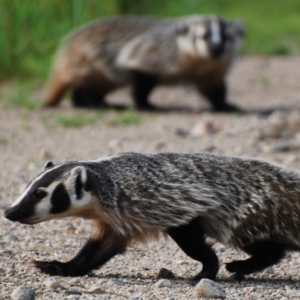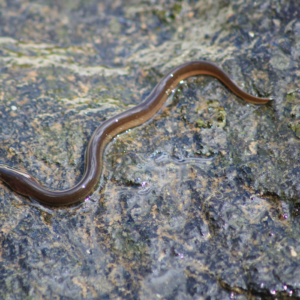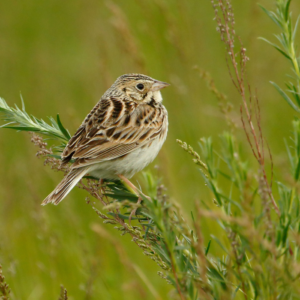Canada Warbler
80% of the global breeding population of Canada Warbler occurs in Canada. This means we have a big role in their protection. Save endangered species today by joining one of our campaigns!
Help End the ExtinctionVital Signs
- Common name: Canada Warbler
- Latin name: Cardellina canadensis
- Conservation Status: Special Concern
- Range: Yukon, Northwest Territories, British Columbia, Alberta, Saskatchewan, Manitoba, Ontario, Quebec, New Brunswick, Prince Edward Island, Nova Scotia
- Lifespan: Unknown, but the longest recorded age is 8 years
- Size: Wingspan of 17-22 cm, body length of 12-15 cm, weight of 9-13 g
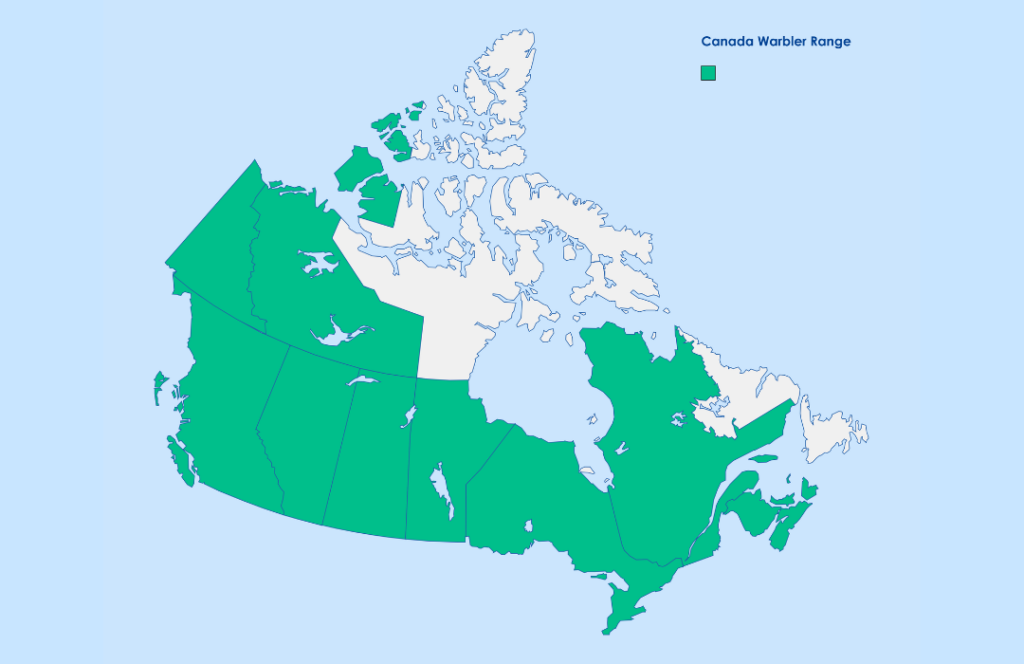
Canada Warblers have blue-grey tails and backs, contrasted by bright yellow throats and breasts. Males and females also have black stripes on the top of their breasts, and just the males have black feathers on their foreheads and cheeks. Unlike most birds, these warblers keep the same plumage all year!
Canada Warbler Facts
- Nicknamed the Necklace Warbler for the collar of black stripes on their upper-chests
- Canada Warblers are found in many types of forests, particularly those near water that have a lot of shrubs and moss
- Forage using the “hawking” method, meaning they grab flying insects right out of the air
- Commonly nest with materials like moss, leaf litter, and roots
- Primarily an insectivore, feeding on things like mosquitoes, butterflies, and moths
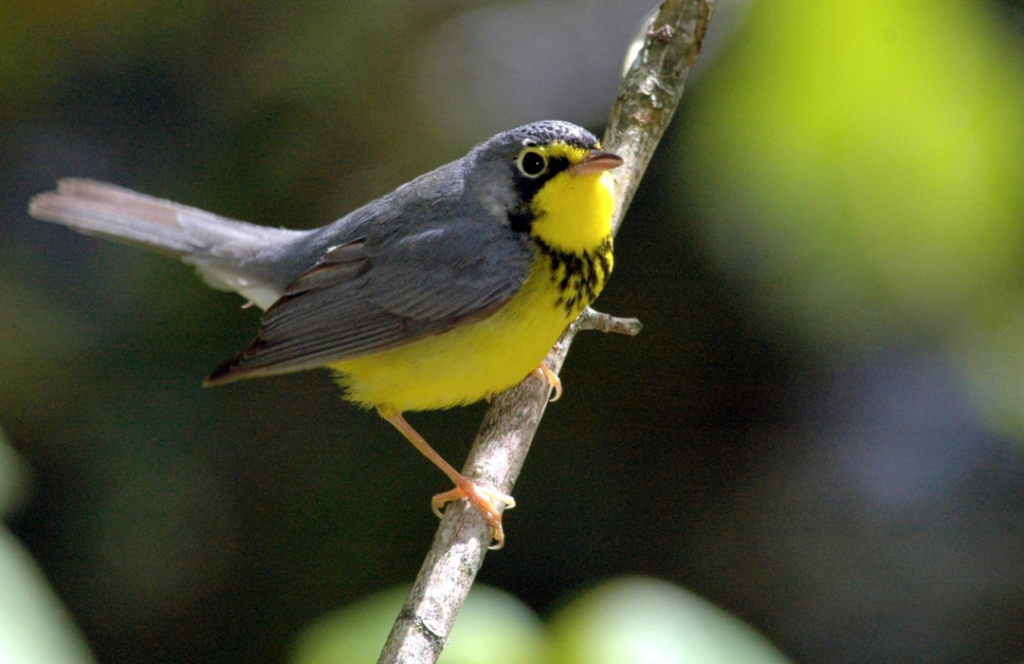
Threats
Protecting the Canada Warbler isn’t just Canada’s responsibility—it’s an international issue. The biggest threat to the Canada Warbler is deforestation, which affects it in Canada and South America. Approximately 90% of forest in the Andes, where the warbler spends the winter, have been cleared for things like agriculture and wood. Other impacts include some forestry practices, forest fragmentation, and climate change.
The Canada Warbler is also at high risk for colliding with buildings during migration.
What’s Being Done
The Canada Warbler International Conservation Initiative (CWICI) was established in 2013 at the BirdLife International Global Congress in Ottawa with Nature Canada, Bird Studies Canada, Environment Canada, and BirdLife International leading. Nature Canada established a website as a public face for the initiative.
In Canada, the warbler is protected under the Migratory Birds Convention Act (1994). Canada also has the Canada Warbler: Recovery Strategy 2016 in place, which focuses on stopping the decline of the species population, then increasing the population over time.
There is also the Canada Warbler Full-life-cycle Conservation Action Plan, the goal of which is to help populations of the warbler everywhere that it is found to live.
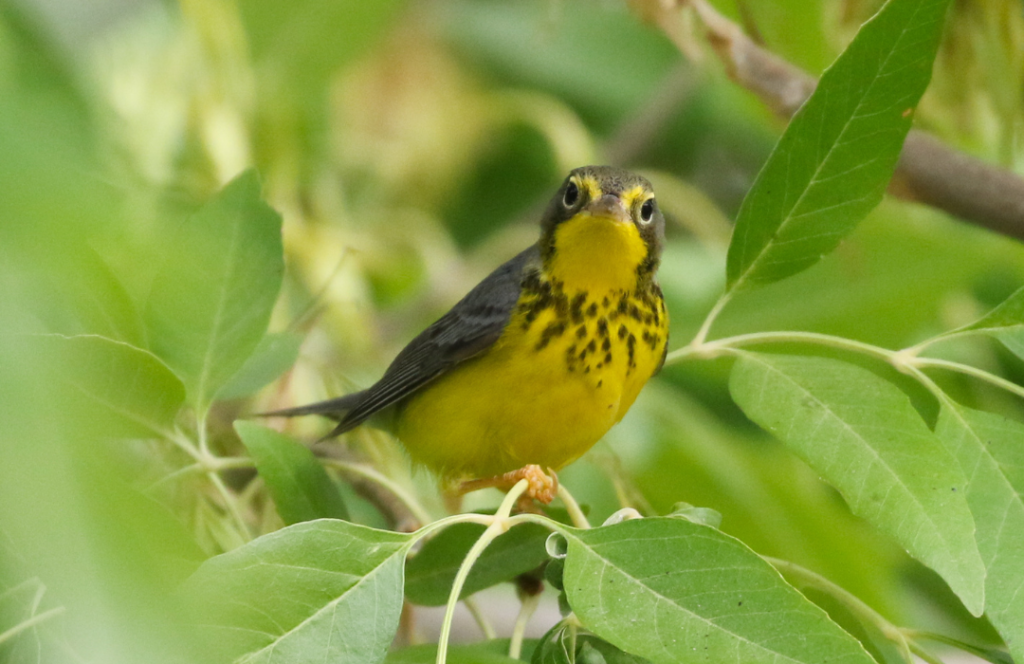
Canada has committed to the goal of protecting 30% of lands, ocean, and freshwater in Canada by 2030. This goal will help protect ecosystems, restore habitats, and fight climate change. All these things are a step in protecting Canada’s at-risk animals—so let’s hold the federal government to their promise.
How to Help
- Make Windows Bird-Friendly: This can be done with solar blinds or taut netting during the day. At night, turn off building lights that attract birds, or close blinds and drapes. Visit our page Cats and Collisions: Windows for more information on reducing window collisions.
- Help Out: Support or work with groups like FLAP Canada, or Safe Wings in Ottawa
- Learn: Stay informed about endangered species by signing up for Nature Canada’s monthly e-newsletter.
- Take Part: Join local naturalist or birding groups. Participate in Citizen Science projects.
- See Birds Canada for a full list of great bird-related projects!
- Start At Home: Join our Bird Friendly City program.
- Find out more: Help us end the extinction by taking action for nature today—visit conservation websites like Nature Canada or join one of our campaigns!
Resources
- The Cornell Lab – All About Birds: Canada Warbler
- COSEWIC – Assessment and Status Report
- Ontario – Canada Warbler
- SARA – Species Profile
Originally drafted by guest blogger Tina-Louise Rossit and Blair Scott. Updated in July 2022 by Simona Casale.

